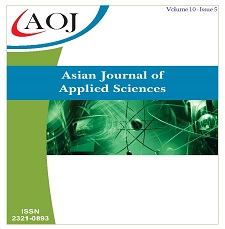A Proposed Algorithm for Determining the Suitable Number of Significant Digits of Force Transducer Calibration Constants
DOI:
https://doi.org/10.24203/ajas.v10i5.7072Keywords:
Significant digits, Force transducer, Rounding, uncertainty, calibration constantsAbstract
Precision measurement is one of the important goals of measurement and calibration. Positive measures are designed to provide researches with the highest accuracy and precision levels. In force measurements, force measuring instrument manufacturers are striving to achieve the best force measurement resolution to accompany the high level of calibration measurement capabilities achieved by the primary deadweight machines. In the calibration of the force transducers, polynomial equations which correlate, the applied load on the transducer and its corresponding output signal in mV/V are deduced. These equations contain numerical constants A, B and C. This paper introduces a mechanism to determine the suitable number of significant digits for these constants. Error analysis procedure for the calibration polynomial equation is proposed. This proposed algorithm safeguards the most accurate and realistic method for rounding the calibration constants
References
Rodr.guez LC et al. Estimation of performance characteristics of an analytical method
using the data set of the calibration experiment. Analytical Letters. 1993;26(6):16
DOI: 10.1080/00032719308019900
Gu H et al. Selecting the correct weighting factors for linear and quadratic calibration
curves with least-squares regression algorithm in bioanalytical LC-MS/MS assays and
impacts of using incorrect weighting factors on curve stability, data quality, and assay
performance. Analytical Chemistry. 2014;86(18):8959-8966'
DOI: 10.1021/ac5018265
Hayashi Y et al. Detection limit estimated from slope of calibration curve: An application
to competitive ELISA. Analytical Sciences. 2005;21(2):167-169
DOI: 10.5772/intechopen.72932
Zhao Y et al. Reasons for calibration standard curve slope variation in LC-MS assays and
how to address it. Bioanalysis. 2014;6(11):1439-1443
DOI:10.4155/bio.14.71
Oliveira EC. Internal standard versus external standard calibration: An uncertainty Case
study of a liquid chromatography analysis. Quimica Nova. 2010;33(4):19
DOI:10.1590/S0100-40422010000400041
Tan A, Awaiye K. Use of internal standards in LC-MS bioanalysis. In: Li W, Zhang J, Tse
FLS, editors. Handbook of LC-MS Bioanalysis: Best Practices, Experimental Protocols,
and Regulations. John Wiley & Sons Inc.; 2013. pp. 217-227
DOI:10.1002/9781118671276.CH17
Vicki Barwick Preparation of Calibration Curves A Guide to Best Practice " LGC/VAM/2003/032. Valid Analytical Measurement (VAM)
DOI: 10.13140/RG.2.2.36338.76488
Downloads
Published
Issue
Section
License
Copyright (c) 2022 Riham S. hegazy, Magdi Ibrahim, Gouda. M. Mahmoud

This work is licensed under a Creative Commons Attribution-NonCommercial 4.0 International License.
- Papers must be submitted on the understanding that they have not been published elsewhere (except in the form of an abstract or as part of a published lecture, review, or thesis) and are not currently under consideration by another journal published by any other publisher.
- It is also the authors responsibility to ensure that the articles emanating from a particular source are submitted with the necessary approval.
- The authors warrant that the paper is original and that he/she is the author of the paper, except for material that is clearly identified as to its original source, with permission notices from the copyright owners where required.
- The authors ensure that all the references carefully and they are accurate in the text as well as in the list of references (and vice versa).
- Authors retain copyright and grant the journal right of first publication with the work simultaneously licensed under a Attribution-NonCommercial 4.0 International that allows others to share the work with an acknowledgement of the work's authorship and initial publication in this journal.
- Authors are able to enter into separate, additional contractual arrangements for the non-exclusive distribution of the journal's published version of the work (e.g., post it to an institutional repository or publish it in a book), with an acknowledgement of its initial publication in this journal.
- Authors are permitted and encouraged to post their work online (e.g., in institutional repositories or on their website) prior to and during the submission process, as it can lead to productive exchanges, as well as earlier and greater citation of published work (See The Effect of Open Access).
- The journal/publisher is not responsible for subsequent uses of the work. It is the author's responsibility to bring an infringement action if so desired by the author.


